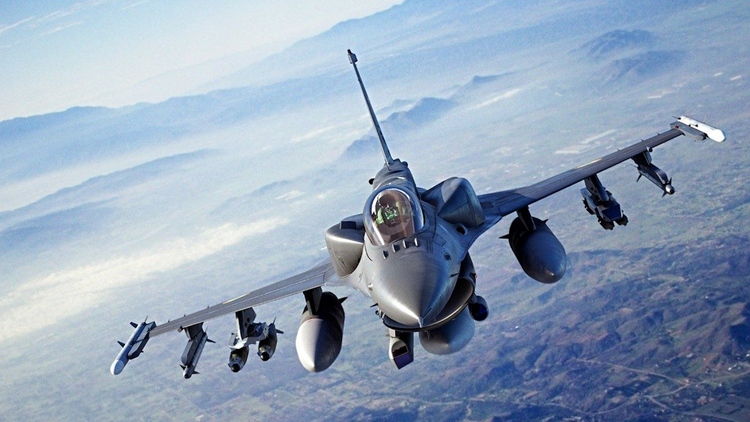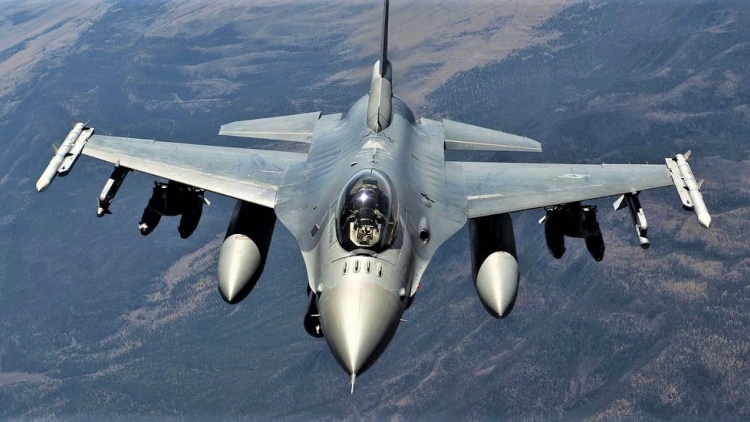For over four decades, the F-16 Fighting Falcon has dominated the skies as one of the most versatile and effective fighter jets ever built. Known for its agility, speed, and combat adaptability, the F-16 remains the backbone of many air forces worldwide, proving that even after years of service, this iconic aircraft is far from obsolete.

A Game-Changer in Modern Air Combat
First introduced in the late 1970s by General Dynamics (now Lockheed Martin), the F-16 was designed to be a lightweight, cost-effective fighter capable of dogfighting and air superiority missions. What set the F-16 apart from its predecessors was its revolutionary design—featuring a bubble canopy for excellent pilot visibility, a side-mounted control stick for ease of maneuvering, and a relaxed static stability (RSS) design, making the jet highly maneuverable at high speeds.
The F-16’s versatility is one of its most praised attributes. It excels in both air-to-air combat and air-to-ground missions, allowing it to perform a wide range of roles, including air defense, close air support, and precision strike. It can carry a wide array of weapons, from heat-seeking air-to-air missiles to laser-guided bombs, making it a formidable force in both air superiority and ground attack operations.

Advanced Technology Meets Simplicity
Despite being a legacy aircraft, the F-16 has evolved with the times. Modern upgrades, such as advanced avionics, radar systems, and precision-guided weaponry, have kept the aircraft relevant in modern warfare. The latest versions, including the F-16V (Viper), are equipped with an advanced Active Electronically Scanned Array (AESA) radar, enhanced targeting pods, and updated cockpit displays. These upgrades make the F-16 capable of engaging even the most sophisticated adversaries.
The jet’s relatively low operational cost has made it a popular choice among air forces worldwide. More than 25 nations, including the United States, Israel, and South Korea, continue to rely on the F-16 as a key part of their military strategy.

Proven in Combat
The F-16 has seen action in countless conflicts, including the Gulf War, Kosovo, Afghanistan, and Iraq, proving time and again that it can hold its own in the most hostile environments. Its combat record is impressive, with numerous successful air-to-air kills and ground strike missions under its belt.
One of the most notable examples of the F-16’s prowess came during Operation Desert Storm in 1991. The jet played a key role in establishing air superiority over Iraqi forces, performing deep strike missions that targeted key enemy installations and infrastructure. Its precision and reliability contributed to the coalition’s overwhelming success in the skies.

A Global Icon
The F-16’s success isn’t limited to just one nation. Its widespread use around the world has made it a symbol of modern air power. Countries like Israel have used the F-16 in daring missions, such as the famous 1981 Operation Opera, where Israeli F-16s destroyed an Iraqi nuclear reactor in a high-stakes mission that demonstrated the jet’s precision and long-range capabilities.
Nations such as Turkey, Belgium, and the UAE continue to fly the F-16, and many have upgraded their fleets with the latest technology to keep the jet combat-ready. Its global popularity and proven track record have made it the most produced western fighter jet since World War II, with over 4,600 units built.
The Future of the F-16
As fifth-generation fighters like the F-35 take center stage, many wonder what the future holds for the F-16. However, the Fighting Falcon shows no signs of slowing down. Lockheed Martin has continued to develop new upgrades for the F-16, and nations are investing in modernizing their fleets to extend the jet’s lifespan for decades to come.
The F-16’s longevity lies in its versatility, cost-effectiveness, and adaptability to modern technology. The introduction of the F-16V, with its state-of-the-art radar and weapons systems, ensures that the Fighting Falcon will remain a critical asset in the air forces of the future.
An Enduring Legacy
Few aircraft can claim the legendary status that the F-16 Fighting Falcon has earned over its lifetime. Its combination of speed, maneuverability, and combat adaptability has made it a symbol of air dominance. Whether performing a high-speed dogfight or a precision ground strike, the F-16 continues to prove why it remains a cornerstone of air defense.
As it continues to evolve and adapt to the needs of modern warfare, the F-16’s legacy is set to endure for generations to come, flying high and defending the skies as one of the greatest fighter jets ever built.





